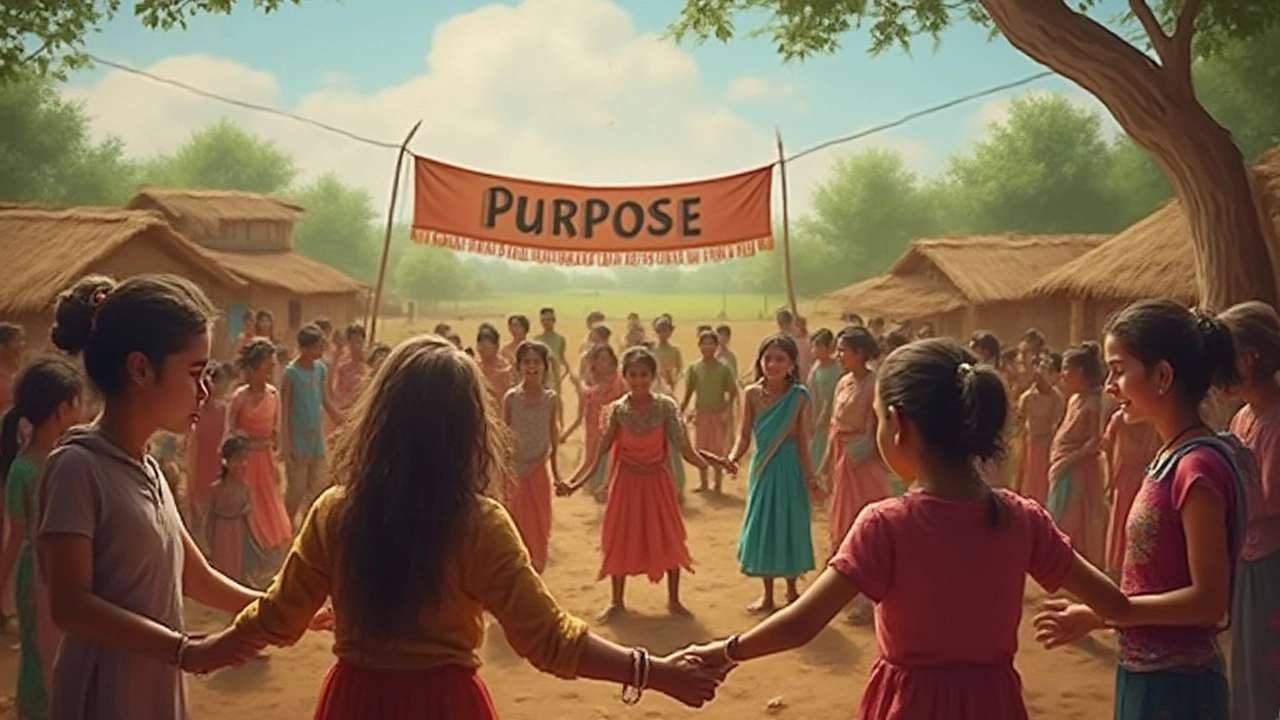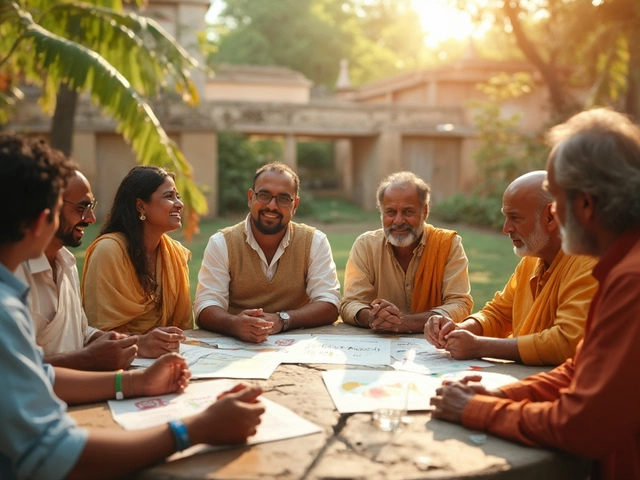When you think about charity, the first thing that probably comes to mind is a donation box or maybe a bake sale at your kid’s school. But behind every successful charity—whether it’s saving dolphins or feeding families—there’s a simple set of principles that quietly steer everything: the 4 P’s. Skip these, and things can get messy fast. Nail them, and a modest community cause can mushroom into something that really moves the needle. Here’s the twist: the 4 P’s aren’t just a checklist, they’re the backbone of how great charities stand out in a world packed with good intentions but not always great results.
Purpose: The Big Why Behind Every Charity
Every charity has a story, but the strong ones have a burning purpose. Purpose is what sets apart a group with a heart from a charity that actually makes lasting change. Think about this: more than 115,000 registered charities call New Zealand home as of 2025, all passionate people with dreams. But why do only a few grab your attention, get media coverage, or inspire loyalty? It starts with getting dead clear on ‘why’ the charity exists beyond just doing something good. Purpose answers questions like, “Why us?” “Why now?” and “Why not someone else?”
Every major drive—think the Wellington Free Ambulance, Leukaemia & Blood Cancer NZ, or charity sports teams that make headlines—had a compelling reason before they put boots on the ground. Their purpose was never vague. If your aim sounds like “help people,” that’s not enough. But “ending child hunger in the Wellington region by 2027,” or “ensuring safe housing for all senior residents in Kapiti Coast,” gets people mobilized. Purpose shapes everything: the kinds of projects you run, the stories you tell, and even the people you attract.
Experts say purpose also drives commitment. When staff and volunteers feel connected to a clear mission, they stick around longer—sometimes years beyond what their contract says. In a 2023 survey by Volunteering New Zealand, 67% of volunteers said they picked causes matching their personal values, not just convenience. Clear purpose is also a magnet for donors. Donors today are picky. They want to see where their dollar goes. A muddy mission loses them fast. But a strong ‘why’ pulls them in and keeps them coming back, which is why charities like Starship Foundation continue to see loyal annual donors.
There’s another side to purpose: measuring if your purpose is actually being achieved. If your goal is to “provide school supplies to all low-income Wellington students,” six months later, can you show a table of kids helped? Without a way to check progress, a mission is just nice words. New Zealand data regularly shows that registered charities with clear outcome statements get 23% more repeat donations.
If you’re starting a charity or refocusing an existing one, never skip this step. Workshop your cause with your team. Run your purpose statement past a few outsiders—can they repeat it after one read? Does it make their eyes light up or glaze over? When you hit that sweet spot, everything from asking for help to raising cash suddenly gets easier.
People: The Heart and Hands of Charity Success
You can have the best purpose in the world, but without people, it’s just an idea on paper. The “people” in the 4 P’s means everyone: founders, staff, volunteers, trustees, and yes—your community. In New Zealand, about 1.2 million people volunteer every year. That’s nearly a quarter of us, and many juggle several causes.
Picking the right people matters. It’s not about grabbing anyone available but about matching skills and passion to your mission. For example, if your charity runs food banks, you need organizers, drivers, fundraisers, and maybe someone web-savvy to manage donations online. Diverse teams do better. That’s not just a slogan—it’s supported by research from Nonprofit NZ, which found diverse boards led to 35% higher fundraising success. People from different backgrounds see problems (and solutions) others might miss. If all your volunteers come from the same street or share the same age group, you’re missing a trick.
But it’s not just about bodies in seats. Recognition and respect are huge motivators. A small thank-you, a volunteer profile on Facebook, or even feedback sessions can make people feel they matter. Burnout in charities is real—especially when you’re constantly asking people to “do more with less.” Rotating responsibilities, training up new leaders, or just running a monthly meal together builds camaraderie and keeps everyone energized.
Here’s a stat to chew on: 1 in 4 new charities struggle to last their first three years, and most cite people-problems as the reason. Either founders burned out, the team clashed, or they couldn’t recruit enough help. Successful charities put almost as much energy into people as into projects. They train. They encourage. They get to know their team beyond the job title.
The last part of “people” is about community. Charities that serve with—not just for—their communities get better traction. For example, mental health groups in Wellington now run lived-experience advisory boards, making sure ordinary people steer everything from campaigns to funding. It’s not tokenism—it works; their attendance and effectiveness climbed by 20% after bringing in community voices. Engaged people don’t just deliver ‘services’—they build relationships, which leads to trust and long-term support no amount of slick advertising can buy.

Promotion: Telling the Story, Rallying the Crowd
The best charity in the world goes nowhere if nobody knows about it. Promotion, the third of the 4 P’s, is all about telling your story—and telling it well. But this isn’t about spending big cash on primetime TV ads. It’s about smart sharing, using whatever tools you have, and making people care.
In 2024, Wellington’s “Blankets for Winter” campaign made headlines on TikTok with a single behind-the-scenes video. Just real people, real lives, and what a donated blanket means. The video went viral, tripling signups for the blanket drive before the city’s coldest nights. Why did it work? Promotion hit home because it felt personal and urgent, not corporate or staged.
Every successful charity has some kind of online presence. Even the tiniest groups now run Facebook groups, email newsletters, Instagram, or WhatsApp chats to keep their supporters in the loop. Not everyone needs to crack national media. Sometimes it’s about the right message to your nearby community at just the right moment(say, lunch at the local marae, or a stall at the CubaDupa festival) rather than blasting out to the world. Charities are now working smarter—using free digital tools, partnering with local influencers, and always pushing updates on what’s being achieved, not just what’s needed.
It’s not just about bragging; it’s about demonstrating outcomes. Prospective donors want proof. Try sharing concrete stats or impact stories, like “last year we provided 8,250 meals to central Wellington families.” Pair numbers with faces—these always win hearts.
Timing matters, too. Knowing the best window to launch a fundraiser (often mid-winter or just before Christmas in New Zealand), syncing with major events (like Matariki or World Environment Day), or riding a trending topic in media can double or triple your reach. But always keep it real—Kiwi audiences are sharp; they can smell a fake from a mile away.
Here’s a quick tip: build relationships with local reporters, bloggers, and even competing charities. Getting mentioned on Radio NZ, Stuff, or even a community podcast can bring in a flood of interest. In Wellington, collaborative days (“Big Give” events) where several charities cross-promote each other turned out 35% more donors than solo campaigns. Promotion is a team sport and the strongest partnerships often start with a simple shout-out on social media.
| Year | Meals Provided | Volunteers | Repeat Donors (%) | Social Media Reach |
|---|---|---|---|---|
| 2021 | 4,000 | 120 | 38 | 28,500 |
| 2022 | 5,700 | 160 | 43 | 33,200 |
| 2023 | 8,250 | 230 | 56 | 61,000 |
The last thing: always ask your supporters to share the word. Word-of-mouth—whether that’s a shout at work, a TikTok post, or a chat at footy practice—remains one of the cheapest, fastest, and most authentic ways to grow your cause.
Performance: Tracking Progress, Boosting Results
The fourth P, performance, is the uncomfortable one for some: are you actually making a difference or just feeling good? In New Zealand, as global charity watchdogs get savvier, the days of “just trust us” are gone. Performance means tracking your work, proving your results, and fixing what doesn’t work.
Performance starts by setting clear goals—not just “run a food bank,” but “reduce food insecurity in Newtown College students by 20% by June 2026.” The best charities break big missions into bite-sized targets. That way, you know when you’re winning or missing the mark. And if you’re off-track, you can respond early rather than scramble at the year’s end.
Keeping tabs on performance can be simple. Track those hard numbers: dollars raised, meals served, volunteers signed up, or coats handed out. But also pay attention to soft stats: community trust, repeat supporter rates, or positive news mentions. These matter more than you might think. The Age Concern network in NZ doubled its impact when it shifted from only ‘counting bums-on-seats’ to tracking things like improved mental health scores and loneliness reduction for its elderly members. Suddenly, they could prove and improve their value—in emails to government funders, annual reports, and, crucially, their own community’s eyeballs.
Technology is helping out here. Free or low-cost donor databases (like Givealittle or Chuffed) let even small groups automate thank-yous, show progress bars, and crunch numbers to see which events or emails really work. Charities that review their progress quarterly—rather than just at tax time—spot trouble early and jump on new opportunities.
Here’s a secret: the charities that publicly admit mistakes and change course get more respect, not less. In 2022, a Wellington reading program flopped when its digital tools didn’t work for kids. Instead of hiding it, they shared what happened, what they learned, and invited feedback. Donations actually grew, and dozens of supporters offered to help upgrade the tech. Performance is about results—but also about trust and transparency.
The real magic? When a charity gets the 4 P’s humming—4 P's of charity—momentum builds. The right purpose draws the right people, who help share the mission widely. Performance turns all that effort into proof and progress you can actually see. For anyone looking to start, join, or support a charity, these four elements should always be at the top of your checklist. Get them right, and your charity will not only survive but thrive, no matter how crowded the field gets or how tough the challenges are.





